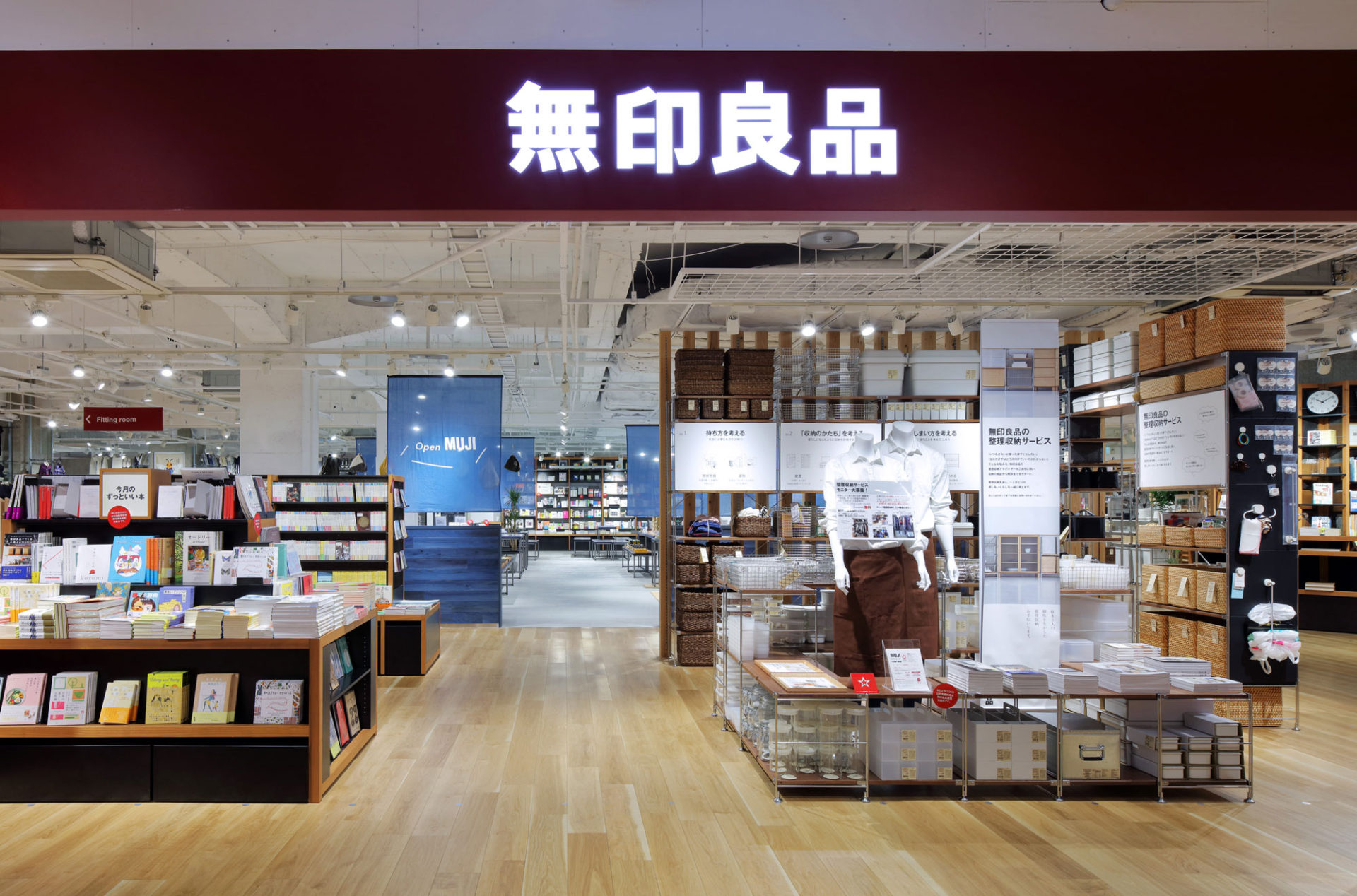地域に開くOpen MUJI
素材を染めた、蒼いMUJI。
「Open MUJI」は、有楽町、博多、大阪など大都市を中心とした全国5店舗の無印良品に設置しているコミュニケーションスペースです。その空間は、ポップアップストアの展開や、ワークショップ、トークイベントなどを開催するプラットフォームとして活用され、中国地方で初めて岡山に導入されることになりました。
クライアントからの条件は「岡山の素材を使う。」ということでした。
岡山には、漆喰、焼杉、万成石等、様々な材料が存在します。しかし岡山の素材は岡山の人たちにとっては、日常にあるものなので、見過ごされるのではないかと危惧しました。
そこで岡山ならではの素材、ジーンズのインディゴで、木・革・布を染めました。自然の色をつけることで、普段見慣れている素材を再発見できないかと試みました。
「木」は県北の杉板を染めてOpenMUJIのエリアを示す壁を構成しました。塗料では出せない自然な美しい蒼い木目が浮き立ちます。「革」は、獣被害によって処分される鹿革を使用し、什器の天板として使用しました。ワークショップ、イベント時には什器がテーブルと椅子に早変わりします。「布」は半透明のスクリーンとして可変可能となっており、様々な使い方に対応できます。
普段見慣れている素材を染め直し、新しいマテリアルエクスペリエンスを感じられる蒼いMUJIです。
“Blue” MUJI
“Open MUJI” is a communication space situated within 5 of Muji shops in Japan’s metropolis such as Yurakucho (Tokyo), Osaka and Hakata. The space has been well enjoyed as a platform for various purposes like pop-up stores, workshops and public talks.
In Okayama City they have decided to open the first “Open MUJI” of Chugoku region (western Japan).
The client’s most important request in designing the space was to utilize Okayama’s region-specific materials.
In fact Okayama has a variety of specialties: stucco, Namako-kabe walls, charred-cedar sidings, Mannari stones, and etc.
But all of those are too common for the local people and we were afraid if we used any of those they would go unnoticed in the shop.
Then we came to an idea of utilizing the indigo of denim fabric - another material that Okayama is famous for. The idea is to dye materials like wood, leather and textiles with indigo. It has been an attempt to rediscover the value of the things that we use daily.
Cedar boards from northern Okayama are dyed blue with indigo then became partition wall boards to surround the shop’s Open MUJI area. You can see the natural blueness that you don’t find in artificial paints.
We recycled leathers of deers, that have caused damages in agriculture and then got hunted, whose pelts were to be discarded. Those leathers were also dyed blue and are used to make upholstery of shop display furniture, which also function as tables and chairs in times of workshops and events.
We also dyed thin textiles to make semitransparent partition screens that can easily be moved or removed.
This is “Blue MUJI” where you can experience new material possibilities.











Project Data
Client : Ryohin Keikaku.,Co.ltd
Advisor : Hajime Kimura
Furniture design : Takashi Kita
Indigo : Tomohisa Shibano / Howa
Leather : Takuro Fujimoto / Fujimoto Yasuichi Shoten
Ceder : Keiichi Takemoto / Takemoto Shoten
General constructors : Kouwa
Structural consultants : Kurashiki Structural Planning Ltd.
Photographer : Kei Sugino

